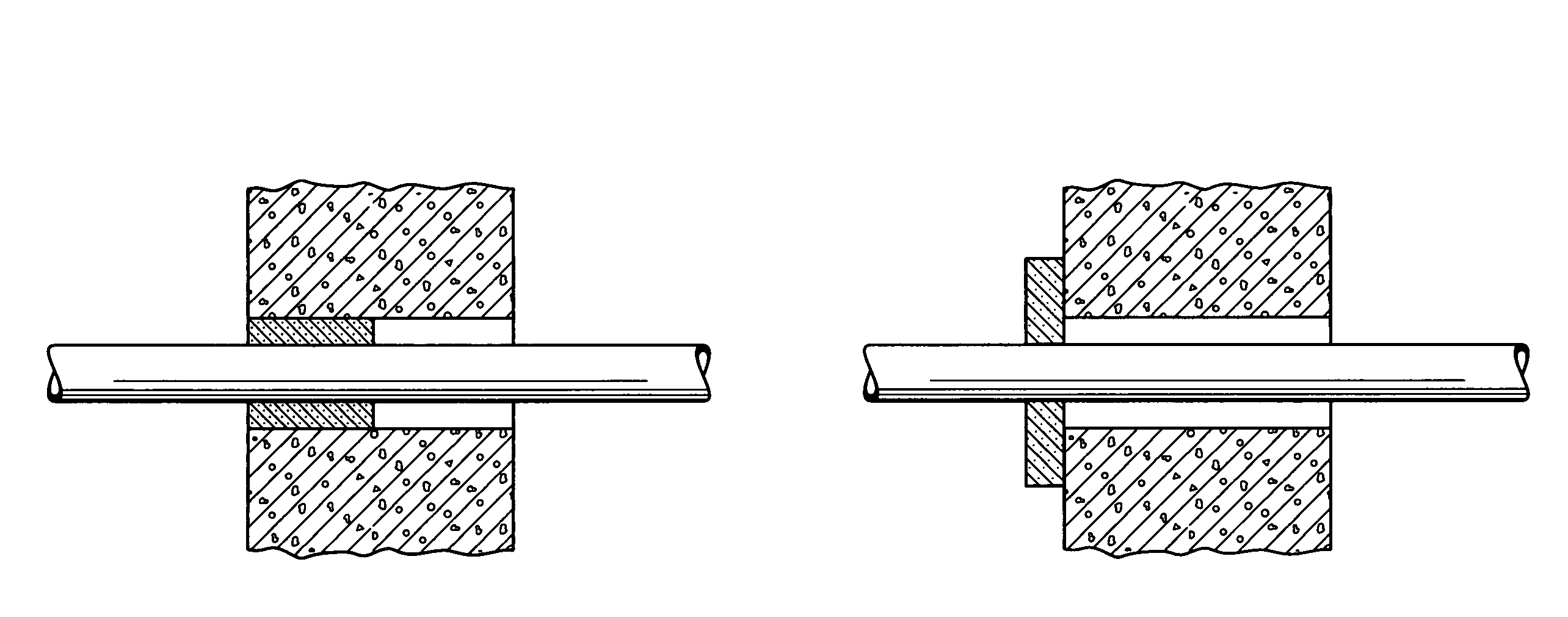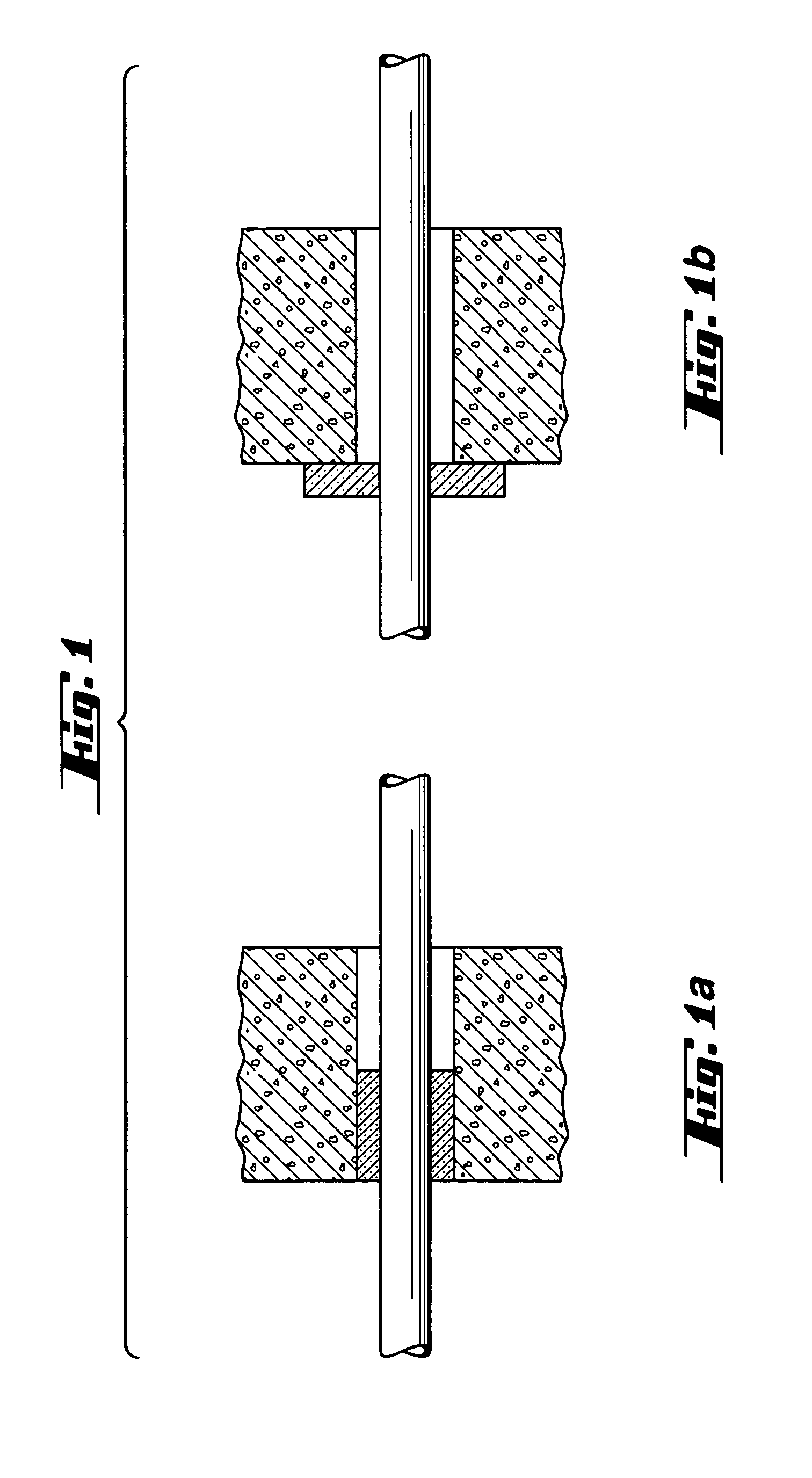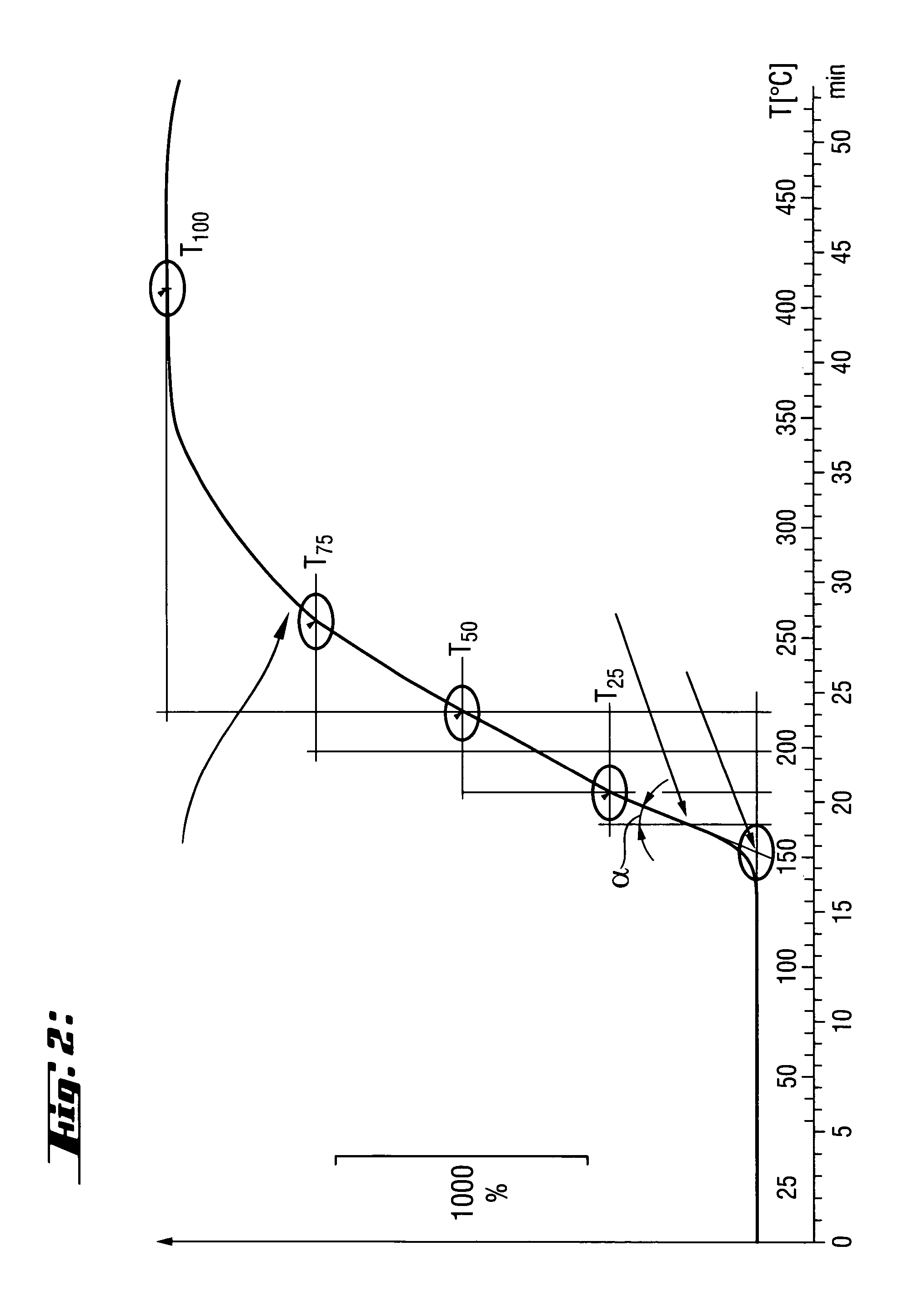Use of thermally expandable graphite intercalation compounds for producing fire-protection seals and method for their production
a technology of thermal expansion and graphite, which is applied in the direction of organic chemistry, pigmenting treatment, group 4/14 element organic compounds, etc., can solve the problems of graphite particles breaking and high expansion volum
- Summary
- Abstract
- Description
- Claims
- Application Information
AI Technical Summary
Benefits of technology
Problems solved by technology
Method used
Image
Examples
example 2
Preparation of the FeCl3 / nitromethane Graphite Intermediate Intercalation Compound (FeCl3 / nitromethane GIC)
[0066]The graphite intercalation compound, containing the FeCl3 and nitroethane as intercalate compounds, having with the expansion parameters given in Table 4 and obtained in the manner described, is obtained by the procedure of Example 1. in which, however, nitroethane is used instead of nitromethane.
[0067]
TABLE 4FeCl3 / NitroethaneGICOnset (° C.)191Volume or sample weight in / mg365Rate in region of onset in % / ° C.9.59Average coefficient of expansion between0.07TMA Onset 1 and T100 in K−1
example 3
Preparation of an FeCl3 / 1-nitropropane Graphite Intercalation Compound (FeCl3 / 1-nitropropane GIC)
[0068]The title compound, is obtained by the method of Example 1. in which, however, 1-nitropropane is used as intercalate compound and as solvent. The expansion parameters of this graphite intercalation compound, which were obtained in the manner described above, are given in the following Table 5.
[0069]
TABLE 5FeCl3 / 1 NitropropaneGICOnset (° C.)233Volume or sample weight in / mg134Rate in region of onset in % / ° C.10.65Average coefficient of expansion between0.030TMA Onset 1 and T100 in K−1
example 4
Preparation of a Graphite Intercalation Compound Containing FeCl3 / nitromethane and Sulfuric Acid (FeCl3 / nitromethane / sulfuric Acid GIC)
[0070]To begin with, 10 g (0.84 moles) of graphite are transferred to a 100 ml round-bottom flask and treated with 1 ml (0.01 mole) of a 30% hydrogen peroxide solution as oxidizing agent and 15 ml of sulfuric acid (95% to 97%) and the mixture is stirred for 3 hours at room temperature. Subsequently, the graphite is washed with water up to a pH of 3 to 4 and dried.
[0071]The H2SO4 / H2O2 graphite (1 g, 84 mmoles), obtained in the manner described above, is added to a solution of 1.17 g (7.2 mmoles) of anhydrous FeCl3 in 3 ml of nitromethane and the mixture is stirred for 20 hours at room temperature, then washed with a little nitromethane and dried.
[0072]The FeCl3 / nitromethane / sulfuric acid graphite intercalation compound, obtained in this way, has the expansion perimeters, which are given in the following Table 6 and were obtained in the manner describe...
PUM
| Property | Measurement | Unit |
|---|---|---|
| particle size | aaaaa | aaaaa |
| particle size | aaaaa | aaaaa |
| softening point | aaaaa | aaaaa |
Abstract
Description
Claims
Application Information
 Login to View More
Login to View More - R&D
- Intellectual Property
- Life Sciences
- Materials
- Tech Scout
- Unparalleled Data Quality
- Higher Quality Content
- 60% Fewer Hallucinations
Browse by: Latest US Patents, China's latest patents, Technical Efficacy Thesaurus, Application Domain, Technology Topic, Popular Technical Reports.
© 2025 PatSnap. All rights reserved.Legal|Privacy policy|Modern Slavery Act Transparency Statement|Sitemap|About US| Contact US: help@patsnap.com



